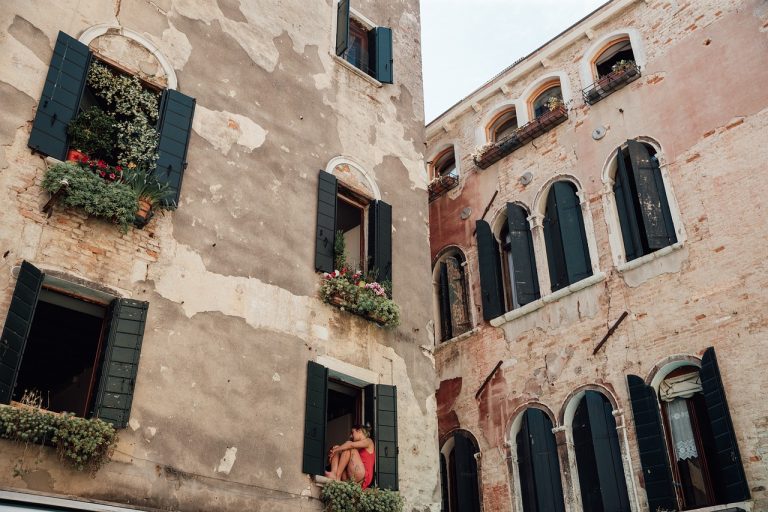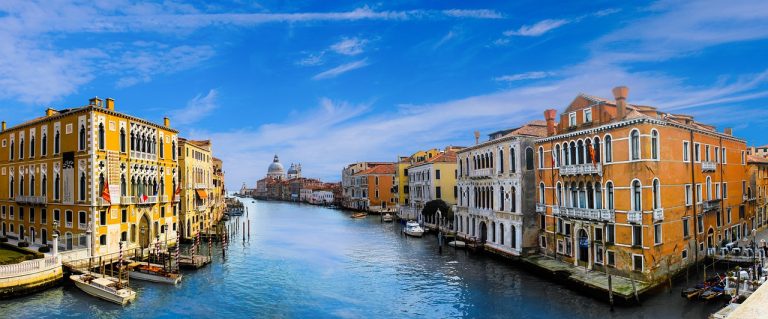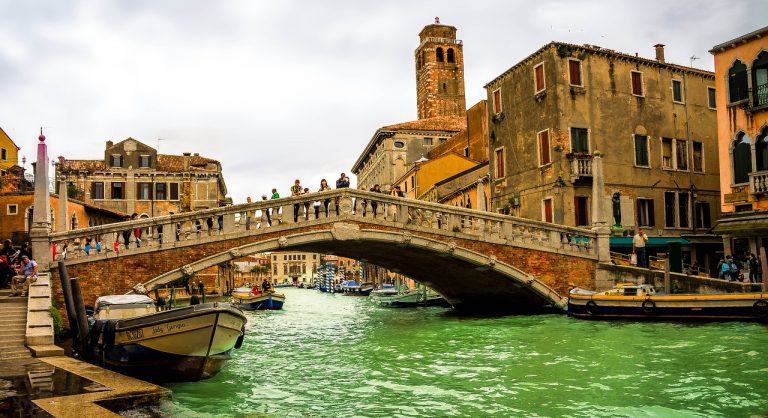Venice Italy Video
Historical Landmarks of Venice Italy: A Deep Dive
Venice, Italy, known as the “Floating City,” is a treasure trove of historical landmarks, each with its own unique story to tell. From grand palaces to intricate churches, the city is a living testament to its rich history and cultural heritage. In this article, we will take a deep dive into ten of the most notable historical landmarks in Venice, providing detailed information and insights into each one.
Rialto Bridge
The Rialto Bridge, spanning the Grand Canal, is one of Venice’s most iconic landmarks. Built in the late 16th century, it is the oldest bridge across the canal and a testament to the architectural prowess of the time. The bridge is adorned with shops and stalls, offering a vibrant atmosphere as visitors traverse its elegant arches. From the top, one can enjoy panoramic views of the Grand Canal, making it a popular spot for tourists and locals alike.
- The bridge was designed by Antonio da Ponte and completed in 1591.
- It is made of Istrian stone and consists of a single central arch.
- The Rialto Bridge was once the only way to cross the Grand Canal on foot.
- It has become a bustling marketplace, with shops selling souvenirs, jewelry, and local products.
- The bridge is an architectural marvel, standing as a testament to Venice’s engineering prowess.
St. Mark’s Basilica
St. Mark’s Basilica, also known as Basilica di San Marco, is the most famous church in Venice. With its stunning Byzantine architecture and intricate mosaics, it is a true masterpiece. The basilica houses the relics of St. Mark and has been an important religious and cultural symbol for centuries. Its grand interior, adorned with gold leaf and precious stones, leaves visitors in awe of its opulence and beauty.
- The basilica was originally built in the 9th century but underwent several renovations and additions over the centuries.
- It is located in St. Mark’s Square, which has been the heart of Venice since the Middle Ages.
- The basilica’s facade is a mix of Byzantine, Romanesque, and Gothic styles.
- The interior is adorned with over 8,000 square meters of mosaic artwork.
- St. Mark’s Basilica is a symbol of Venice’s historical and cultural significance.
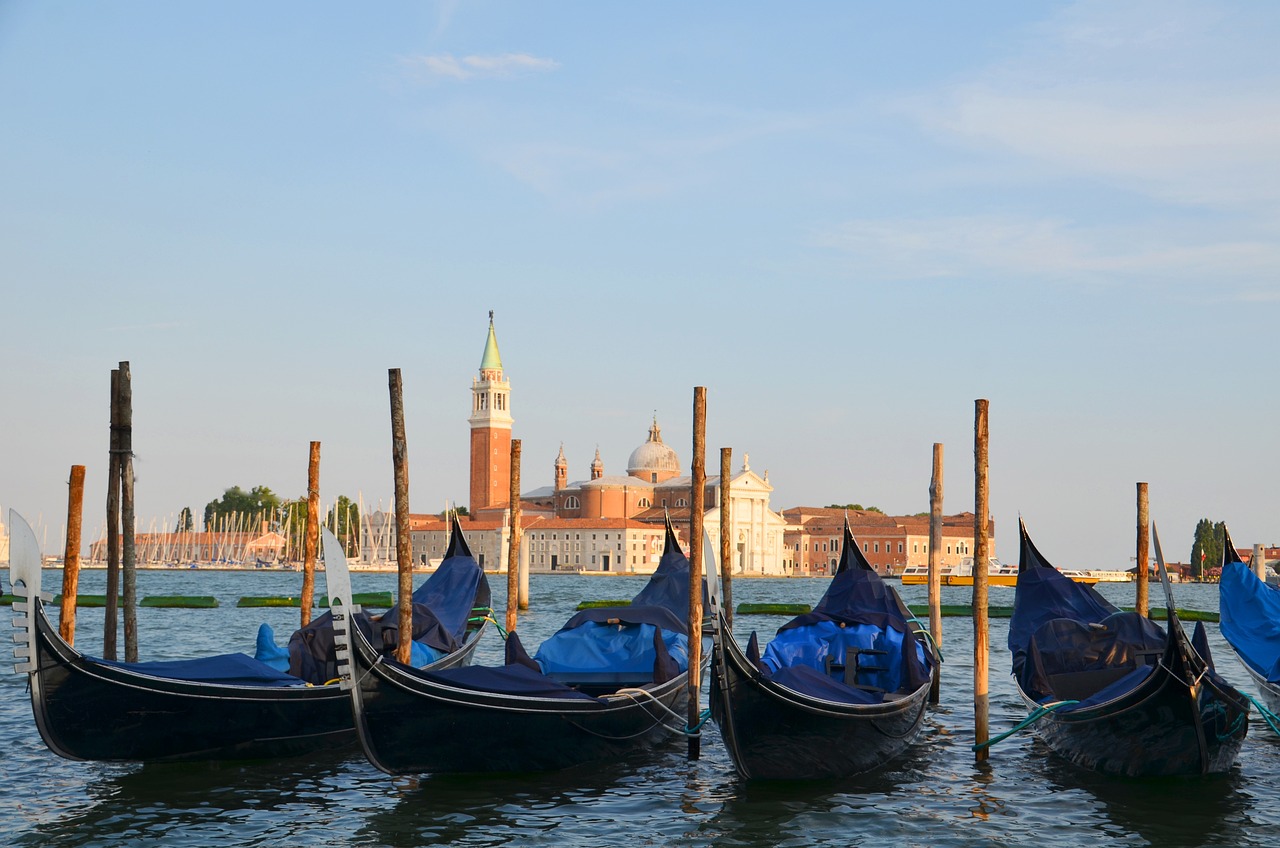
Doge’s Palace
The Doge’s Palace, or Palazzo Ducale, was the residence of the Doge of Venice and the seat of Venetian government. It is a stunning example of Venetian Gothic architecture and is located on St. Mark’s Square, adjacent to St. Mark’s Basilica. The palace is now a museum, allowing visitors to explore its lavish rooms, magnificent halls, and secret passages. It offers a glimpse into the political and cultural history of Venice.
- The construction of the Doge’s Palace dates back to the 14th century, although it has undergone numerous expansions and renovations.
- It served as the political and judicial hub of the Venetian Republic.
- The palace features a blend of Gothic, Renaissance, and Oriental influences in its architecture.
- Highlights of the palace include the Great Council Chamber, the Doge’s Apartments, and the Bridge of Sighs.
- Visitors can also explore the prison cells and cross the Bridge of Sighs, which connects the palace to the New Prison.
Grand Canal
The Grand Canal is the main waterway in Venice, meandering through the city in a reverse “S” shape. It is often referred to as the “most beautiful street in the world” and is lined with magnificent palaces, churches, and other architectural wonders. Navigating the canal by vaporetto (water bus) or gondola is a quintessential Venetian experience, offering breathtaking views of the city’s historic buildings.
- The Grand Canal stretches for about 3.8 kilometers (2.4 miles) and has an average depth of 5 meters (16 feet).
- It is spanned by four major bridges: the Rialto Bridge, the Accademia Bridge, the Scalzi Bridge, and the Constitution Bridge.
- Many of the palaces along the Grand Canal date back to the Renaissance and Baroque periods.
- Some notable palaces include Ca’ d’Oro, Palazzo Dario, and Palazzo Grassi.
- The Grand Canal is a vibrant waterway, bustling with activity and serving as the main thoroughfare of Venice.
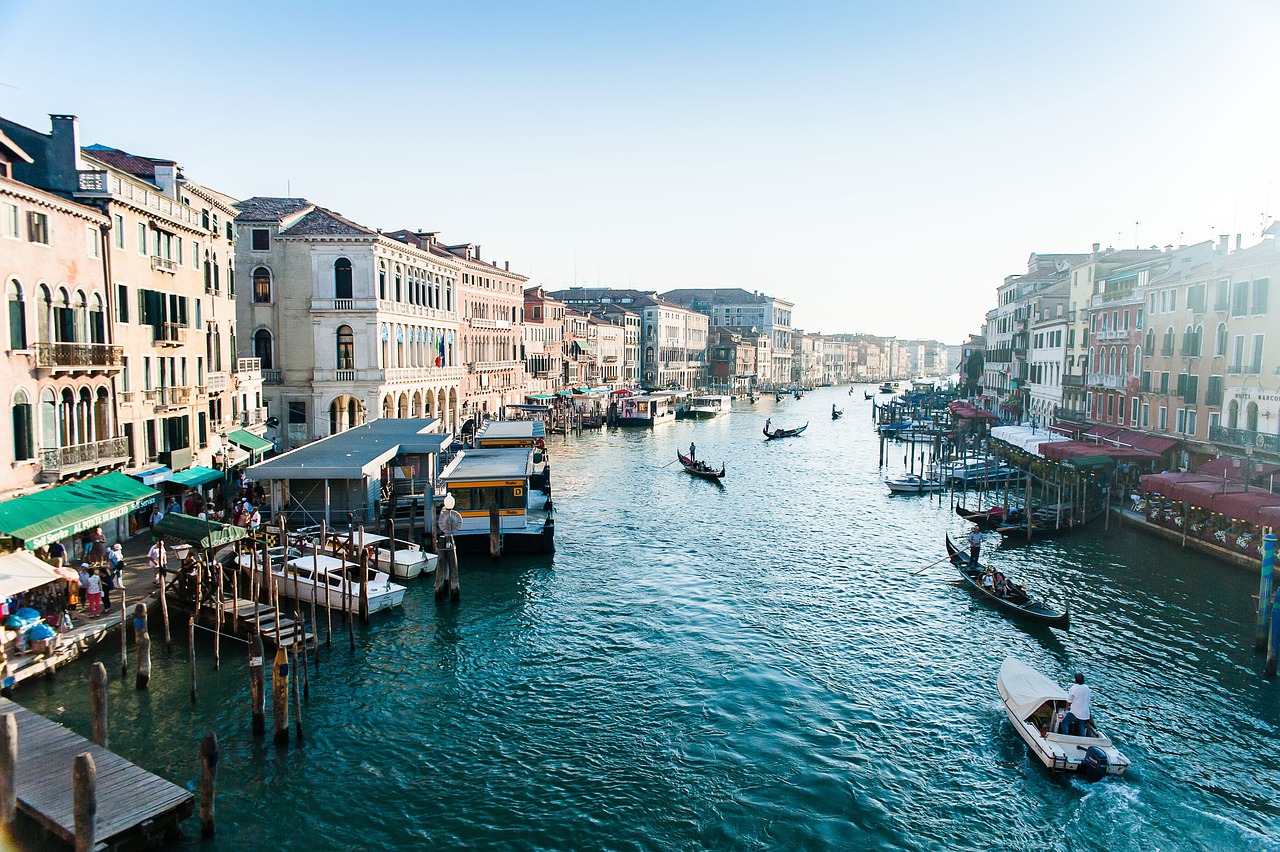
Piazza San Marco
Piazza San Marco, or St. Mark’s Square, is the principal public square in Venice and has been the social, political, and religious center of the city for centuries. Surrounded by architectural marvels like St. Mark’s Basilica and the Doge’s Palace, it is a true reflection of Venice’s grandeur and splendor. The square is a bustling hub of activity, with cafes, shops, and musicians entertaining visitors throughout the day.
- Piazza San Marco has been the heart of Venice since the 9th century.
- The square is named after St. Mark, the patron saint of Venice.
- It is home to several important landmarks, including the Clock Tower and the Procuratie buildings.
- Piazza San Marco is known for its distinctive architecture, with influences from Byzantine, Gothic, and Renaissance styles.
- It is a popular gathering place for both locals and tourists, offering a lively atmosphere and stunning views.
Bridge of Sighs
The Bridge of Sighs, or Ponte dei Sospiri, is an iconic bridge in Venice that connects the Doge’s Palace to the New Prison. Its name originates from the sighs of prisoners who, according to legend, would catch their last glimpse of freedom as they crossed the bridge. The bridge’s white limestone facade and stone-barred windows make for a picturesque sight, and it has become a symbol of romanticism and Venetian history.
- The Bridge of Sighs was built in the early 17th century by Antonio Contino.
- It is made of white Istrian stone and features beautiful Baroque-style architecture.
- The bridge is adorned with stone-carved decorations and a series of small windows.
- It gained its romantic reputation through Lord Byron’s writings, popularizing the idea that the bridge was named for the prisoners’ sighs.
- Today, visitors can cross the bridge and take in its captivating views of the canal and surrounding buildings.
Church of San Giorgio Maggiore
The Church of San Giorgio Maggiore is a prominent landmark situated on the island of the same name, just across the Bacino di San Marco from St. Mark’s Square. Designed by Andrea Palladio, one of the most influential architects in history, the church is a masterpiece of Renaissance architecture. Its elegant facade, towering bell tower, and stunning interior make it a must-visit for art and architecture enthusiasts.
- The Church of San Giorgio Maggiore was completed in 1610.
- It is a prime example of Palladian architecture, characterized by symmetry and classical elements.
- The church’s interior features beautiful artworks, including paintings by Tintoretto and Jacopo Bassano.
- Visitors can climb the bell tower for panoramic views of Venice and the lagoon.
- The island of San Giorgio Maggiore also offers a peaceful retreat from the hustle and bustle of the city.
Ca’ Rezzonico
Ca’ Rezzonico is a magnificent palazzo located on the Grand Canal and is now home to the Museum of 18th-Century Venice. The palazzo showcases the opulent lifestyle of Venetian nobility during the 18th century, with its ornate rooms, exquisite artworks, and lavish furnishings. It provides a fascinating insight into the cultural and social history of Venice during this period.
- Ca’ Rezzonico was built in the 18th century by the noble Bon family.
- It features Venetian Baroque architecture and is considered one of the finest palaces in Venice.
- The museum houses a collection of paintings, sculptures, and decorative arts from the 18th century.
- Highlights include works by famous Venetian artists such as Giambattista Tiepolo and Pietro Longhi.
- Visitors can explore the palazzo’s grand halls, ballrooms, and private apartments, experiencing the splendor of Venetian aristocracy.
Scuola Grande di San Rocco
The Scuola Grande di San Rocco is a stunning Renaissance building that serves as a confraternity hall and a treasure trove of art. Decorated by the renowned Venetian painter Tintoretto, the scuola showcases his masterpieces, including the largest canvas painting in the world. The intricate details and vibrant colors of the artworks make it a must-see for art enthusiasts.
- The Scuola Grande di San Rocco was founded in the 16th century as a charitable organization.
- It is one of the best-preserved scuole in Venice.
- The scuola’s interior is adorned with over 50 paintings by Tintoretto, depicting scenes from the Old and New Testaments.
- The Sala dell’Albergo is particularly impressive, featuring Tintoretto’s masterpiece, “The Crucifixion.”
- Visiting the scuola allows visitors to appreciate the talent and artistry of one of Venice’s most celebrated painters.
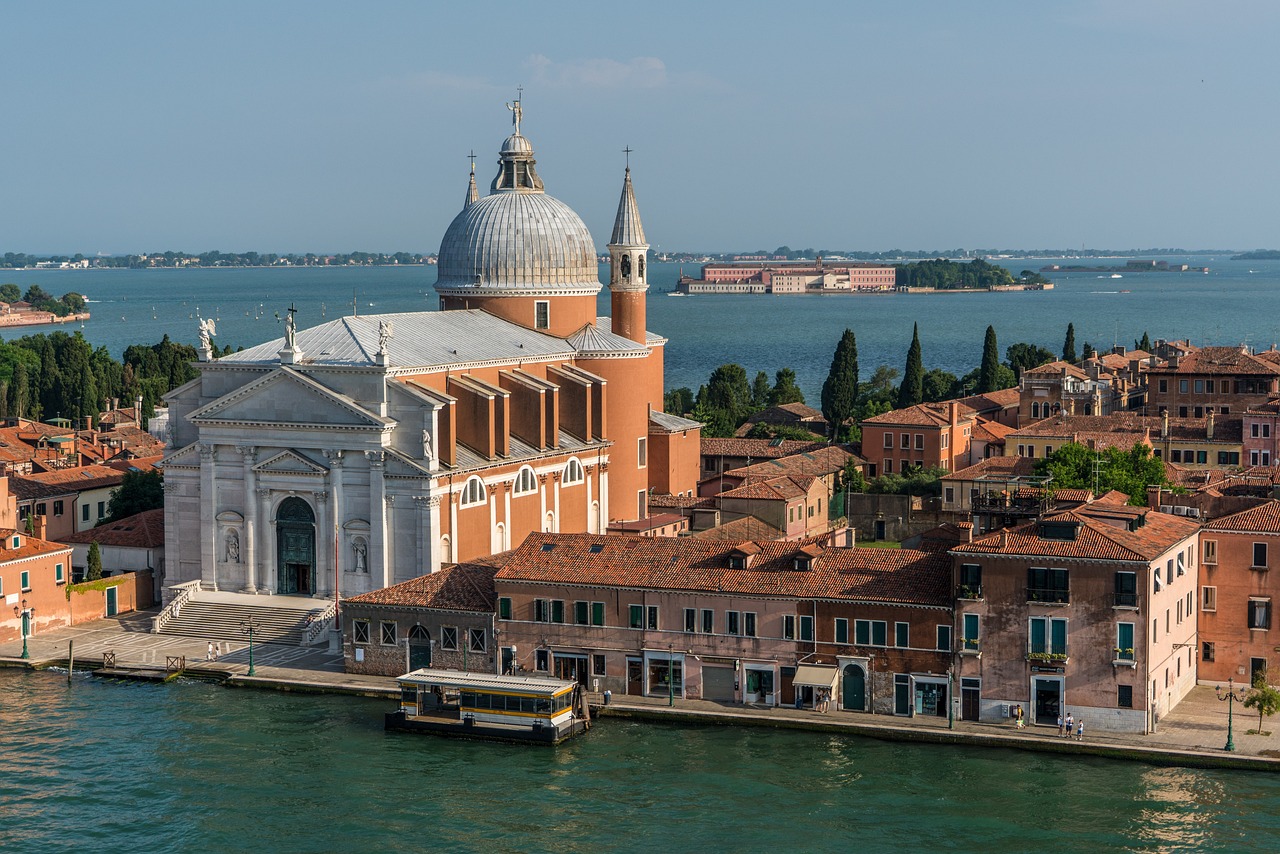
Conclusion
Venice, Italy, is a city steeped in history and brimming with architectural wonders. Its historical landmarks, such as the Rialto Bridge, St. Mark’s Basilica, and the Doge’s Palace, offer a glimpse into the city’s glorious past. The Grand Canal, Piazza San Marco, and the Bridge of Sighs add to the city’s charm and allure. Exploring the Church of San Giorgio Maggiore, Ca’ Rezzonico, and the Scuola Grande di San Rocco provides a deeper understanding of Venice’s cultural heritage. As you traverse the city’s intricate canals and marvel at its architectural splendor, you’ll truly appreciate why Venice is considered one of the most captivating cities in the world.
References
– venetoinside.com
– palazzoducale.visitmuve.it
– basilicasanmarco.it
– venice-tourism.com
– museiciviciveneziani.it
– chorusvenezia.org
– sanrocco.org


